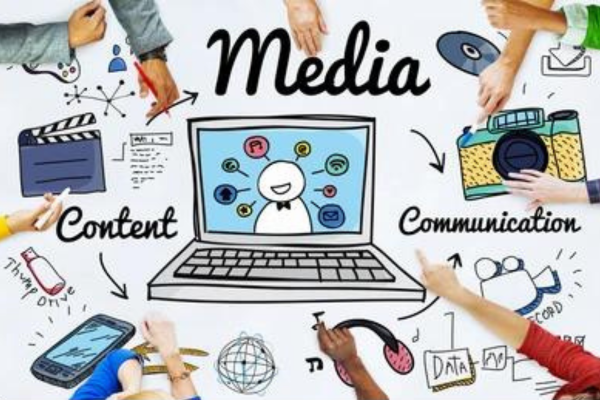Mass communication, also referred to as communications, is the process of producing, distributing, receiving, and evaluating messages for a broad audience through written and spoken media. It is a broad field that takes into account the medium through which a communication is transmitted in addition to the how and why it is made. These media are diverse and include print, radio, television, social media, digital media, and the Internet. Strategic communication, health communication, political communication, integrated marketing communications, journalism, and other related professions are all incorporated into the multidisciplinary field of mass communication.
What is Mass Communication?
In the modern, networked world, where information spreads instantly and at the speed of light, comprehending mass communication is essential. This dynamic area affects not just our news consumption habits but also our societies, cultures, and even our personal identities. A vast range of professions are part of mass communication and are essential to our everyday existence.
Types of Mass Communication

A variety of methods are used in mass communication to spread information to wide-ranging, audiences. The mediums, goals, and distribution strategies of these forms vary. The four main types of mass communication are as follows:
Print Media– Print media are publications that use printed materials to spread information. Newspapers, booklets, brochures, pamphlets, and newsletters fall under this category. With its extensive coverage, analysis, and opinion on a wide range of subjects, print media has long been a major source of news and information. Comprehensive reporting, in-depth storytelling, and a physical medium that readers can refer to whenever they’re ready are all made possible by print media. Even while print media circulation has been affected by digital media, long-form content and public opinion are still greatly influenced by it.
Broadcast Media– Broadcast media is the technological distribution of audio and video content to large audiences. Radio and television broadcasting are included in this. Visual content such as news programmes, documentaries, entertainment shows, and ads are aired on television. It effectively engages viewers and conveys information by combining audio-visual aspects. It is essential for spreading information, entertainment, and cultural content in real time since it can reach vast audiences at once.
Digital media– It includes communication via digital platforms and technology, is referred to as broadcast media. This covers blogs, online forums, podcasts, social media sites, mobile apps, and webpages. Digital media uses the worldwide reach of the internet to rapidly and interactively spread information. It promotes a participatory culture by enabling two-way communication where users may produce, share, and comment on material. Targeted advertising, real-time analytics for evaluating audience engagement, and personalised content consumption are all made possible by digital media. In the digital age, its accessibility and interactivity have revolutionised the production, distribution, and consumption of information.
Outdoor/Out-of-Home Media- Publicly displayed advertisements and messages that target audiences outside of their homes are referred to as outdoor or out-of-home (OOH) media. Digital advertising, street furniture including benches and bus shelters, billboards, and transit advertisements on buses, trains, and taxis are examples of this. OOH media focuses on customers in busy locations like retail malls, highways and city centres. It provides brands with exposure, visibility, and repeat impressions to draw in customers. OOH media effectively conveys messages and raises brand awareness by fusing creativity and intelligent placement.
Benefits of taking Mass Communication

If we talk about the benefits that a person will have after studying mass communication is that one can build up their career in marketing and advertising, entertainment, healthcare, journalism, public relations, non-profit and government, communications consulting, broadcast media, financial services, and foreign services are just a few of the many fields in which someone with a degree in the field can work. You can learn how to communicate with new individuals and express your ideas through mass communication. Consequently, you may feel more confident. Additionally, it will boost your confidence and help you increase the size of your vocabulary. It enables you to advance in your social life.
Conclusion
To sum up, studying mass communication is more than just learning communication strategies; it’s also about realising the significant effects that information sharing has on communities, cultures, and people as a whole. Mass communication is crucial in influencing how the world works, from promoting intercultural understanding to influencing public opinion and enhancing digital literacy. People can become positive change agents in their communities and beyond by studying mass communication. This course equips students with the information, abilities, and ethical frameworks needed to navigate the complicated media landscape of today.













































